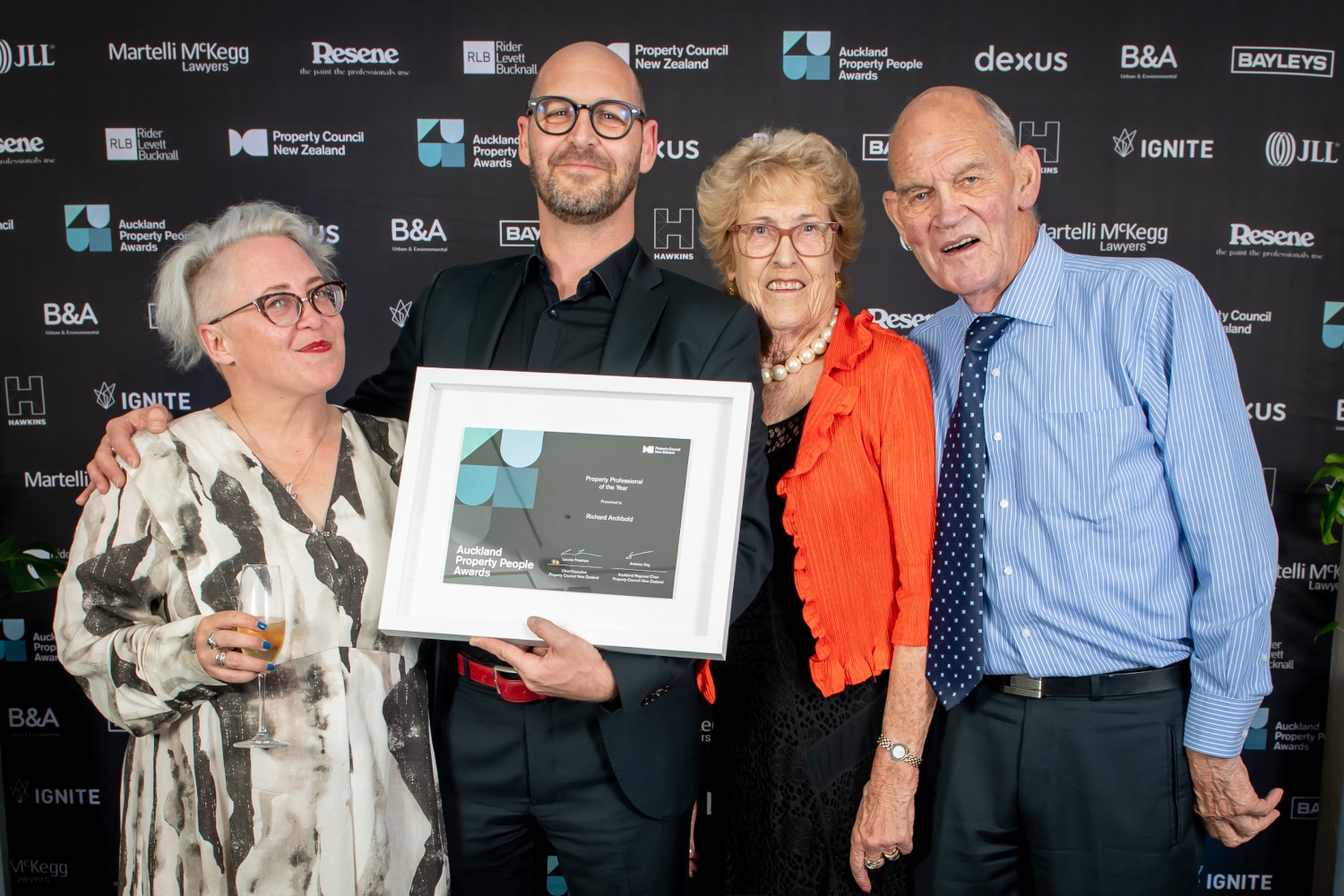Seeing people come into a finished building and begin to use it for the first time is always a special moment for Warren and Mahoney principal Richard Archbold.
Buildings aren’t alive until people are in them - they are sort of inanimate,” he says.
“When buildings open and people flood through them – especially public-facing buildings, it is an incredibly special moment to see these thousands of hours of work individually and collectively finally bearing fruit and coming alive as a building.”
Arch, as everyone calls him, describes architecture as an “act of extraordinary optimism”.
“You’re making something out of nothing. It’s not design for manufacture – there’s no repeat, with limited exceptions.
“You’re making a thing that has never been built before, and you’re bringing an enormous team of people along with you to do that.”
Unlocking that collaborative power is Arch’s real passion.
“Every new project is a new team, sometimes some familiar faces and building on those relationships. But gathering a group of people into a common purpose is a very special opportunity that my job gives me.”
Architecture – whether for a single house or a commercial tower – sits right at the heart of the vascular system of the property industry, he says.
But, the profession is not well understood by those outside of it.
“Many people think anyone who does a drawing is an architect,” he says.
“But the creative side, the technical knowledge, the ability to understand the client’s needs and how all of those skills come together to achieve something built.
”Personally, he wishes he’d had a better understanding of the profession’s breadth sooner.“I had a preconception about what it was,” Arch says.
“Realising the different ways it is possible to be an architect came later than I would have liked.”
As a Studio Principal, Arch’s work has huge variety, including tasks ‘the average person might not consider to be part of the role of an architect’.
Warren and Mahoney also uses a broad definition of design, encompassing everyone contributing to a project, from interior designers to strategists and marketers.
“We have, for example, a legal team who frequently offer really intelligent insights as to how we might approach a design problem from a perspective we might not have otherwise considered.”
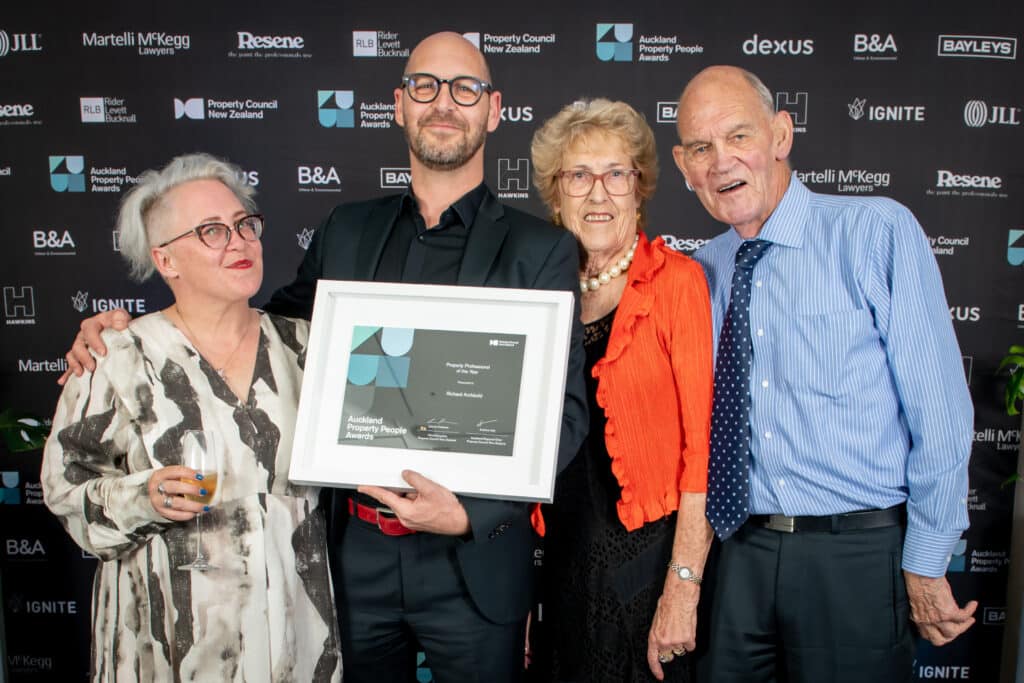
The recipient of last year’s Auckland Property Professional of the year award, Arch says his introduction to architecture began while growing up remotely on the family farm, surrounded by fascinating devices and machinery.
“It’s a really visible way to see how things work and, secondary to that, things break, and you have to fix them.”
“That idea of the ingenuity of how you solve a problem was very attractive to me.”
Those early experiences crystallised at school, where his drawing and drafting skills were encouraged in “what they used to call technical drawing”.
As he studied, he worked in various offices during his summer holidays, gaining his first long-term role at Warren and Mahoney in 1999.
At that time, the Auckland studio had 12 people.
“We have 140 now.”
Economic cadence
Warren and Mahoney benefits from its long heritage and geographic reach, Arch says. The firm, established in Christchurch in 1955 by Sir Miles Warren and Maurice Mahoney, now has teams in Christchurch, Wellington, Auckland, Tauranga, Queenstown, Dunedin, Sydney and Melbourne.
There's not really a building typology we haven’t worked on. So, we are extremely fortunate that there is a legacy of experience in those kinds of buildings.”
Its solid reputation helps open doors for on-going workloads across a variety of typologies, he says.
The ‘cadence’ of projects changes year-by-year, decade-by-decade, and with economic cycles.
He says the current economic cycle may be showing ‘green shoots’ following the downturn the past year. But a lot depends on market sentiment alongside the “big forces” such as interest rates.
“As John Maynard Keynes said, ‘The market can remain irrational longer than you can remain solvent’.”
“Everyone’s debating whether the Reserve Bank is right or not, whether we are out of recession or not.
“There’s definitely green shoots,” he says. “But if I could predict when that was going to pick up, I’d be very successful.”
In the shorter term, Arch says there is also some collective breath-holding that happens every election cycle with reticence around some types of projects.
Projects with a deeper keel will ride that out, he says. That includes Government-funded education, health, infrastructure investments that are “good for the industry and good for the country”.
Longer term, there are projects that also involve off-shore funding which can be “counter-cyclical”.
Warren and Mahoney does tend to have a “very diverse range of work – but we see those cycles come through across our drawing boards”, Arch notes.
Warren and Mahoney is a long-term member of the New Zealand Property Council. Arch says its advocacy is “always valued”.
Membership also provides connections to the industry and insight into how those cycles are playing out more broadly.
“It’s the best opportunity we have for seeing, ‘what does it look like from where you sit?’,” Arch says.
He says conferences and events are valuable opportunities for team members to network and bring insights back to the studio.
“That is the most direct benefit. And we are always keen participants, when there are panels and debates and those sorts of things.”
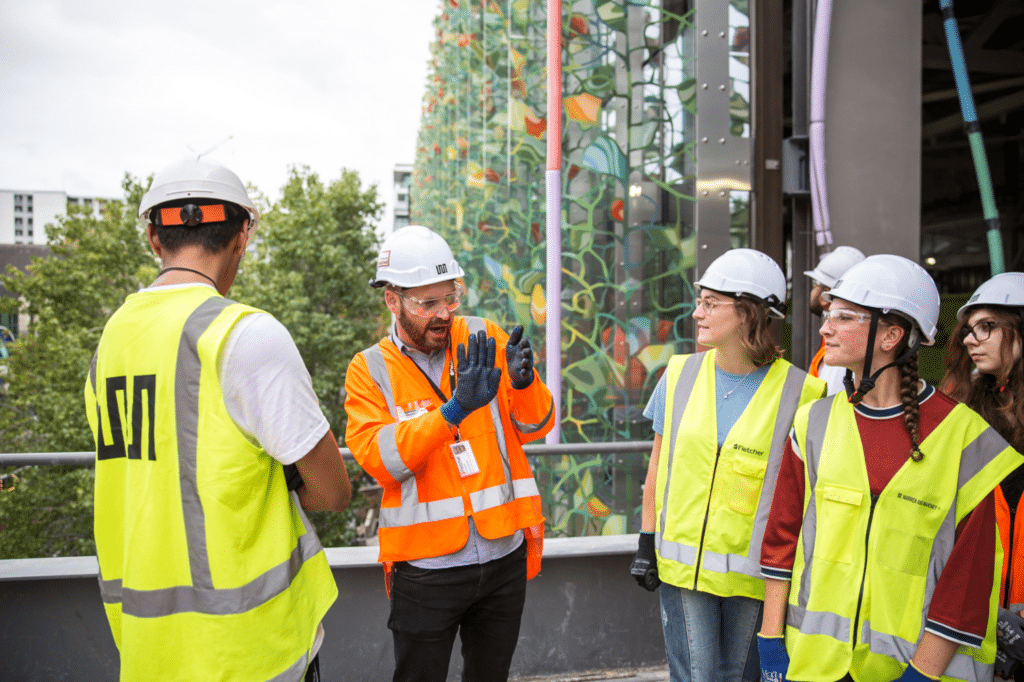
Complexity and relationships
Having worked on and led large, complex projects, Arch particularly enjoys bringing together internal team members and external consultants.
A standout project was the revitalisation of the ANZ Centre – originally built in 1991 – in Auckland’s CBD.
Working on the tenanted building was “a bit like trying to change someone’s trousers while they were running”.There were staged handovers, structural upgrade, architectural upgrades, demolition and new space – all happening in an occupied building.”
Another highlight project is the International Convention Centre (NZICC), which Arch led from 2013 to 2018, taking it through the early workshops, stakeholder engagement, design, presenting to the Urban Design Panel, and working with Auckland Council.
“And then getting into the documentation – and the first couple of years of Fletchers being established on-site.”
Arch learned “an enormous amount” about team management and particularly situational management working with diverse groups of people through the project.
We work very hard to balance our studio and teams out, with a range of viewpoints and backgrounds and experiences.”
“With that comes the fact that this includes different people with different temperaments, different triggers, aptitudes and different development areas. So, the ongoing journey that I am going through, and everyone who has led any team should continually be improving on, is those adaptations you make to each different person to get a team humming.”
His current role as a studio principal, is also rewarding, seeing him support fellow Studio Principal Ilona Haghshenas and the leadership team.
A core responsibility is the studio’s performance.
“That takes up about a third-to-a-half of my week and is a slightly different set of emphases: Running the studio, forecasting workload, project performance and looking under the hood of projects to see how we can tweak and make them more efficient.”
That includes working to ensure better design outcomes, more efficient documentation and higher technical standards and quality.
“And that’s shared with a huge range of people – technical experts, heads of design – so very much an interpersonal role.”
Arch highlights that team leadership requires a “lot of listening … a lot of empathy”.
If something has gone wrong for me, it is usually because of my failure to really perceive what someone’s like. Once you get better at that, you start to queue someone up with tasks that really get them flying.”
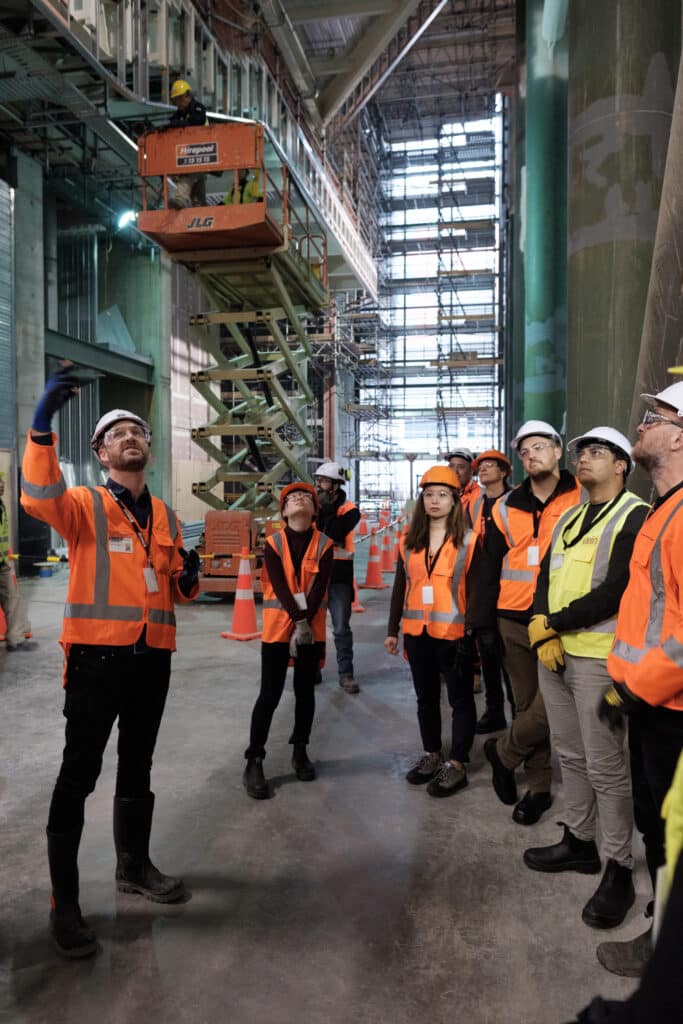
Industry changes
Arch says there have been changes “several times over” since he entered the industry in the late 1990s.
“The way in which design discussions happen, particularly with software, has had a huge influence.”
New Zealand is “catching up” with Building Information Modeling – BIM – projects using models for the planning, design, construction, and management of building and infrastructure projects.
“The ability to deliver a lot of complexity through that has been really big.”
Moving from traditional procurement into early contractor involvement and design-build at the scale of work that Warren and Mahoney does will be very significant, he says.
There is diversification of the contractor market, with some “really major Australian contractors now in the New Zealand market – Icon, CPB, BESIX Watpac – who are very experienced in the design-build and early procurement space, as well as large project experience”.
Another current change is a broadening of definitions around ‘environmental impact’ and ‘sustainability’.
It now should be business as usual for every practitioner, and they should be helping support their clients to do the most they possibly can to mitigate environmental impact.”
This includes the evolution beyond “solar panels and low-water fixtures” to resilience as a key design concept, as well as the circular economy, recyclability, and recognition of the cost of embodied and operational carbon.
“You can get quite macro – there are long-term strategic benefits in a large-sale timber construction industry here in New Zealand, because of the impacts of other materials being brought when we produce so much of it.”
Personally, he would like to see resilience measures “accelerated by legislation”.
Because - while we are lucky to work with many clients who are really ambitious in this space - the Building Code is still the worst building you are legally allowed to build.”
He frequently attends university events and engages with the generations coming through. Issues around climate, social equality and environment are “very high on the list” of things they are focused – and will vote – on in the future, he says.
Arch also sees build-to-rent as an area which shows promise with some significant schemes underway.
“That will be very new for us in New Zealand, but Australia is much further down that line and much more experienced, as well as in the procurement and finance models to fund those.”
Arch deeply appreciates the “maturation of Auckland as a city”.
“When I studied in the 90s, it was a wasteland,” he says. “The population of people resident in the CBD in 1991 was 1,400 people, and today it’s 54,620.”
That has led to and “explosion” of amenities in the city centre – pharmacies, supermarkets, schools, restaurants, public transport, parks – “all of these things have improved Auckland 10-fold”.
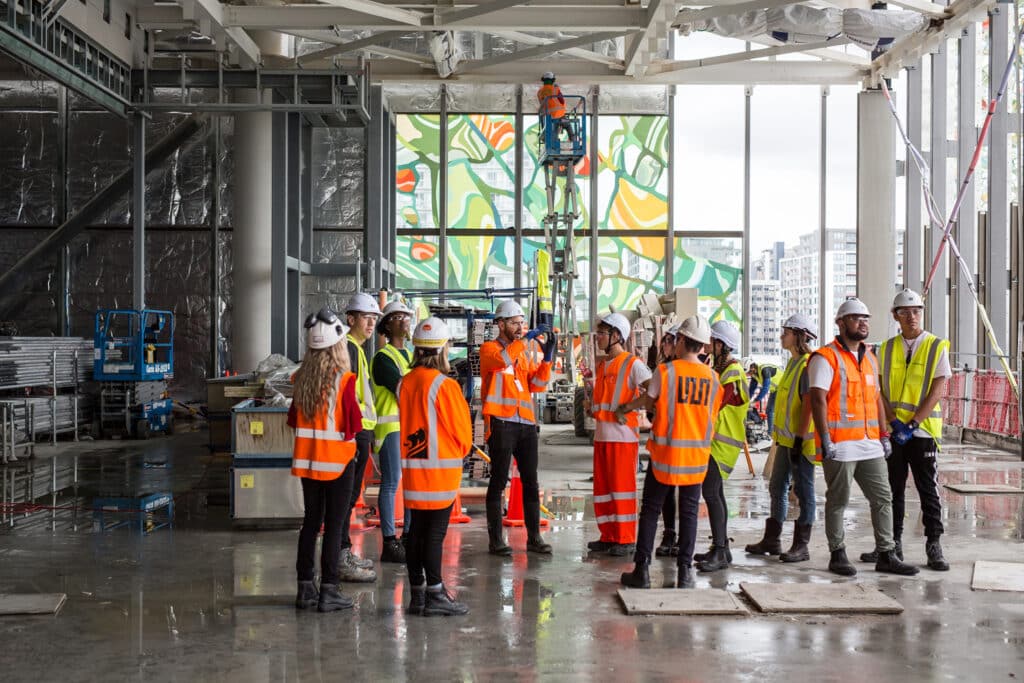
Supporting talent
Arch is particularly enjoying now being in a position where he can ‘exert some real influence’, especially on younger architects coming into the industry.
As a very long-term project which is bigger than any building, Arch is very proud of working with the Keystone Trust to help young people get the education necessary for a successful property or construction career.
“It is targeted at students who are disadvantaged or who might not have the means to get to university or might be first-in-family to go to tertiary.
“So it’s really, actively, broadening the talent base of the property industry by accelerating and supporting students who might not be a part of that industry otherwise.”
The trust, started in 1994 as a legacy of property developer Graeme Bringans, now supports more than 50 students to complete property-related degrees around the country, including construction management, QS, surveying, engineering and architecture.
Arch is inspired by the recipients, many of whom are “offensively talented, and are making a real difference in the industry”.
“Many are now well into their careers, and it must be rewarding for the founders and organisers to see that initial fire that they kindled burning so bright.”
He also says working with the students is also a “reminder of privilege”.
The fact that I even knew architecture was an option, the fact that I had access to some of that – it’s a reminder of what an initial leg up that is.”
Networking events are opportunities for sponsors from across the industry to meet each other and hear from the students. Additionally, they hold site visits, studio tours, and provide formal mentoring.
“It’s great for the students – they are meeting a range of industry professionals and getting a chance to ask their questions and get their replies.”
Anyone entering architecture or the property industry should reach out and ask for time with your heroes, he says.
“Most architects would love to give a young person interested in the profession half an hour of their time.”
Seeing different studios helps those coming through balance the tertiary framework with “how real-world practice happens and understand how wide the funnel is that you’re going into”.
Some practices focus on large commercial and infrastructure, others are working with developers.
“There are practices that have really worked out how to rationalise their operation to meet a particular need and it is as valid a mode of practice as any other,” Arch says.
“I know architects that spend their time just talking to people. They are looking for opportunities – they are looking to join up dots in relationships and to meet needs with offers.”
Arch is also proud of the podcast – 76 Small Rooms – he does with Jeremy Hansen, Natasha Markham, and Mat Brown. Mat is a former Warren and Mahoney colleague, Natasha is a director of MAUD architects, and Jeremy previously edited HOME and Paperboy magazines and contributes to The Spinoff, among other things.
The podcast arose because they had been lamenting the lack of discussions on architecture in Aotearoa for a broader audience.
“The next thing we knew, I was there with the four of us at Richard Naish’s ‘E-Type’ house – the Home of the Year winner in 2015. Off we went from there.
“We’ve seen amazing buildings, met amazing people and heard some fantastic ideas and perspectives.”
There are now nearly 50 episodes: “I like to think we are creating an archive of those conversations.”
“Architecture can be a little like marking your own homework – it can be a small group,” he says.
“I really enjoy taking the conversation beyond that.”
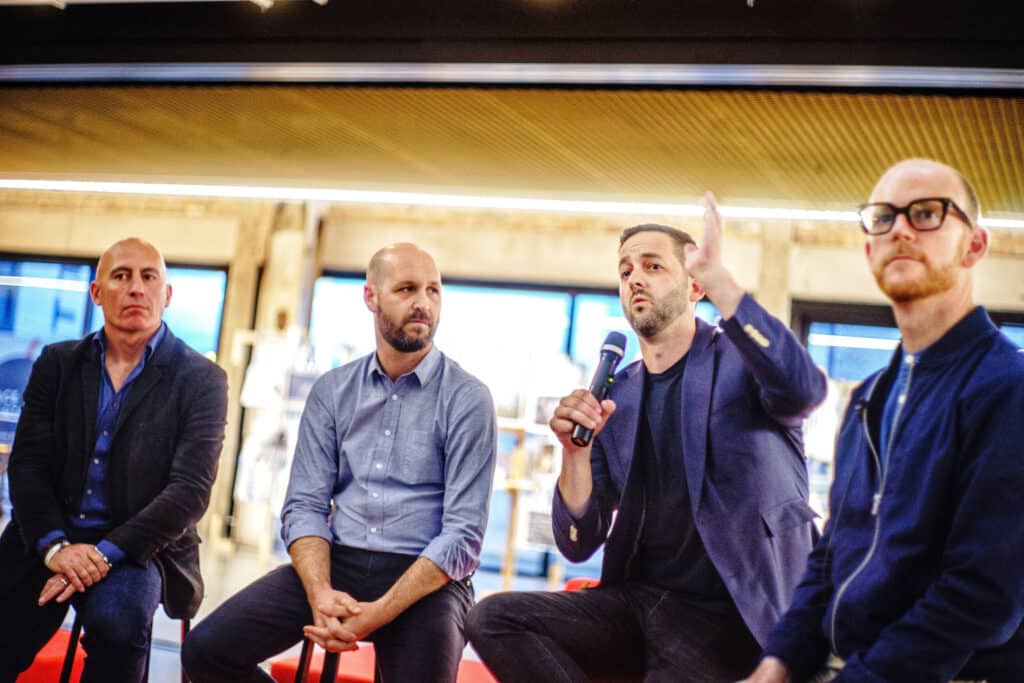
About the City Shapers Series
The City Shapers Series is a collection of interviews with some of Property Council’s most prominent members. The series is about showcasing the people in property – the city shapers who lead extraordinary teams, develop exemplary projects and demonstrate the very best of the New Zealand property industry.
We aim to highlight the property industry’s role as an important contributor to New Zealand’s economy and our members as ‘city shapers’, building communities for Kiwis to live, work, play and shop.
Author: Felicity Wolfe

